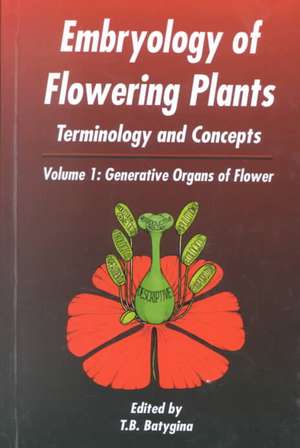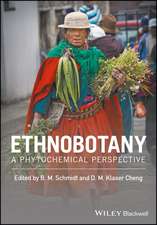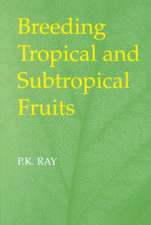Embryology of Flowering Plants: Terminology and Concepts, Vol. 1: Generative Organs of Flower: Embryology of Flowering Plants
Editat de T B Batyginaen Limba Engleză Hardback – 9 ian 2002
Preț: 1052.04 lei
Preț vechi: 1447.48 lei
-27% Nou
Puncte Express: 1578
Preț estimativ în valută:
201.37€ • 218.81$ • 169.26£
201.37€ • 218.81$ • 169.26£
Carte tipărită la comandă
Livrare economică 21 aprilie-05 mai
Preluare comenzi: 021 569.72.76
Specificații
ISBN-13: 9781578081882
ISBN-10: 1578081882
Pagini: 442
Dimensiuni: 152 x 240 mm
Greutate: 0.98 kg
Ediția:1
Editura: CRC Press
Colecția CRC Press
Seria Embryology of Flowering Plants
ISBN-10: 1578081882
Pagini: 442
Dimensiuni: 152 x 240 mm
Greutate: 0.98 kg
Ediția:1
Editura: CRC Press
Colecția CRC Press
Seria Embryology of Flowering Plants
Cuprins
Preface; Introduction; PART ONE- FLOWER; PART TWO-ANTHER; MICROSPORANGIUM WALL; MICROSPOROGENESIS; POLLEN GRAIN; PART THREE-OVULE; MEGASPORANGIUM; INTEGUMENTS; OTHER SPECIAL STRUCTURES OF THE OVULE; EMBRYO SACS; TYPES OF EMBRYO SAC DEVELOPMENT; TRANSPORT OF SUBSTANCES IN THE OVULE
Descriere
The book is divided into three parts: Flower, Anther, and Ovule. The principal aim of this volume (along with the other 3 volumes in the series) is to summarize the classical and current concepts about flower generative organs, their structure and development, and about seed formation processes. The book contains ample material that can be employed in theoretical generalizations, in analyzing the distribution of features (or their uniqueness) and evolutionary transformations of structures. This offers vast possibilities for revising the existing and developing new classifications and concepts.











